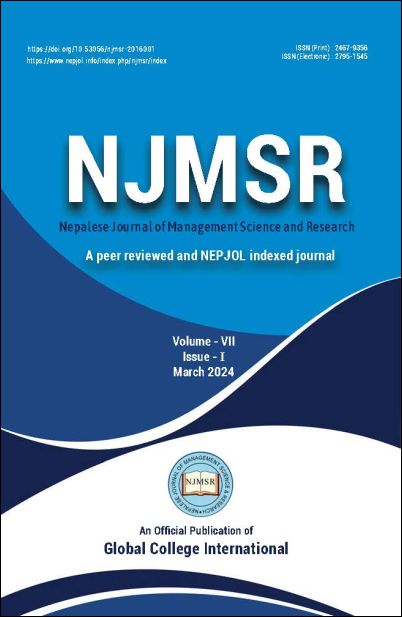Digital Finance And Financial Metrics as A Tool For Financial Inclusion in Nepal Bagmati Province
Keywords:
Digital banking, Access and usage digital banking, Customer delight, Quality banking, Digital finance in NepalAbstract
The purpose of this study is to investigate how financial metrics and digital finance may be used in the Nepalese province of Bagmati to promote financial inclusion. It assists in discovering the characteristics that enable digital financial inclusion by attempting to uncover the critical elements that analyze society behavior in this regard. With a quantitative methodology, panel data from 6400 respondents is used in the study. To investigate correlations between variables and choose the best model for analysis, descriptive statistics, unit root tests, correlation analysis, and the CFA model are used. ADB, UDB, CDB, GDB, and QDA were discovered to have an incredibly significant positive correlation in the current study. The current study also found that the regions of Nepal's Bagmati Province had a relatively high percentage of voluntary exclusion. but there was also a very good chance of switching to the use of QDA. By analyzing the effects of numerous financial measures and digital finance within the dynamic and cutthroat financial market of Bagmati province, this study adds to the body of knowledge on financial analysis. The results provide useful information to promote digital financial inclusion in Nepal's Bagmati Province and support well-informed financial decision-making that will improve the banking and financial sector.
Downloads
Downloads
Published
How to Cite
Issue
Section
License
Copyright (c) 2024 Nepalese Journal of Management Science and Research

This work is licensed under a Creative Commons Attribution-NonCommercial-NoDerivatives 4.0 International License.
This license enables reusers to copy and distribute the material in any medium or format in unadapted form only, for noncommercial purposes only, and only so long as attribution is given to the creator.

